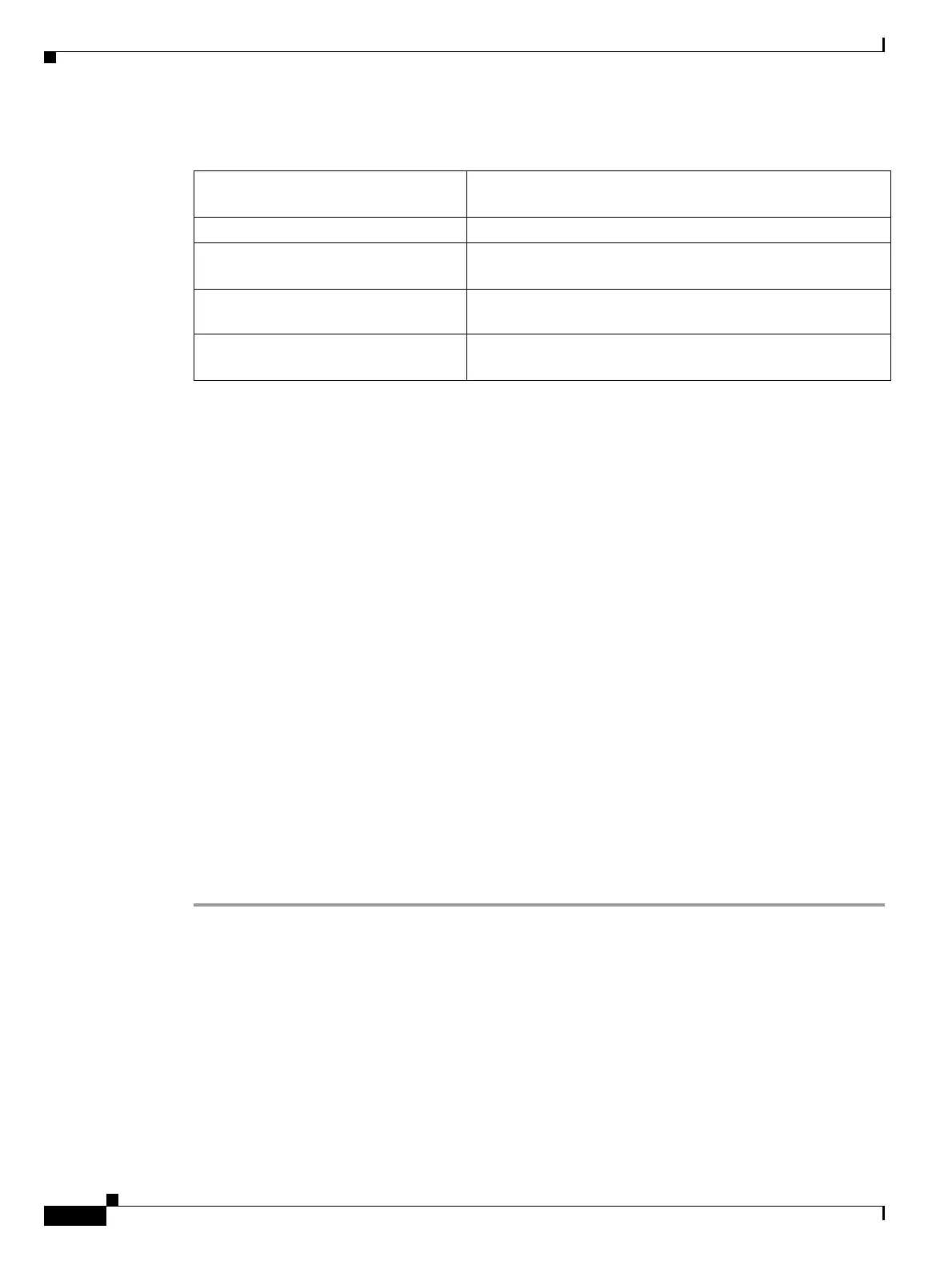5-78
Cisco ONS 15454 DWDM Installation and Operations Guide, R6.0
September 2005
Chapter 5 Provision Transponder and Muxponder Cards
DLP-G321 Change the MXP_MR_2.5G or MXPP_MR_2.5G Card Line Thresholds for 1G Ethernet or 1G FC/FICON Payloads
Step 6 From the Alarm Type drop-down list, indicate whether the event will be triggered by the rising threshold,
falling threshold, or both the rising and falling thresholds.
Step 7 From the Sample Type drop-down list, choose either Relative or Absolute. Relative restricts the
threshold to use the number of occurrences in the user-set sample period. Absolute sets the threshold to
use the total number of occurrences, regardless of time period.
Step 8 Type in an appropriate number of seconds for the Sample Period.
Step 9 Type in the appropriate number of occurrences for the Rising Threshold.
For a rising type of alarm, the measured value must move from below the falling threshold to above the
rising threshold. For example, if a network is running below a rising threshold of 1000 collisions every
15 seconds and a problem causes 1001 collisions in 15 seconds, the excess occurrences trigger an alarm.
Step 10 Enter the appropriate number of occurrences in the Falling Threshold field. In most cases a falling
threshold is set lower than the rising threshold.
A falling threshold is the counterpart to a rising threshold. When the number of occurrences is above the
rising threshold and then drops below a falling threshold, it resets the rising threshold. For example,
when the network problem that caused 1001 collisions in 15 seconds subsides and creates only
799 collisions in 15 seconds, occurrences fall below a falling threshold of 800 collisions. This resets the
rising threshold so that if network collisions again spike over a 1000 per 15-second period, an event again
triggers when the rising threshold is crossed. An event is triggered only the first time a rising threshold
is exceeded (otherwise, a single network problem might cause a rising threshold to be exceeded multiple
times and cause a flood of events).
Step 11 Click OK.
Step 12 Return to your originating procedure (NTP).
mediaIndStatsTxFramesBadCRC Number of transmitted data frames with payload CRC errors
when HDLC framing is used.
fcStatsLinkRecoveries Number of link recoveries.
fcStatsZeroTxCredits Number of transmit attempts that failed because of unavailable
credits.
8b10bInvalidOrderedSets Number of 8b10b disparity violations on the Fibre Channel
line side.
8b10bStatsEncodingDispErrors Number of 8b10b disparity violations on the Fibre Channel
line side.
Table 5-47 MXP_MR_2.5G and MXPP_MR 2.5G Card 1G Ethernet or 1G FC/FICON
Variables (continued)

